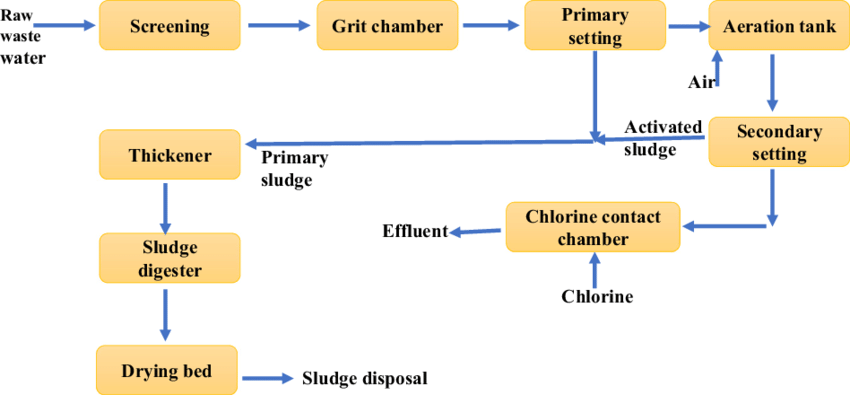The Best Guide To Reclaim Waste
The Best Guide To Reclaim Waste
Blog Article
Reclaim Waste Fundamentals Explained
Table of ContentsReclaim Waste - The FactsNot known Facts About Reclaim WasteReclaim Waste Can Be Fun For Anyone9 Easy Facts About Reclaim Waste DescribedThe Ultimate Guide To Reclaim Waste
Check out the types, events, and types of fluid waste. Domestic sewage waste refers to the waste and products from a household septic storage tank. This sort of waste is produced by human beings in residences, schools, and various other structures. This only includes septic systems that have a drain area. The appropriate management and disposal of residential sewer waste need liquid waste to be moved to a sewage therapy plant where the appropriate approaches and devices are used to purify and take care of waste.
Business waste usually includes potential hazards, such as combustible materials or a mixture of fluid and strong waste items, and requires a much more advanced and detailed disposal process. The disposal of commercial waste generally involves the filtration of waste before transport to make certain risk-free and correct disposal. Hazardous waste is created from byproducts and runoff of commercial processes and production.
This kind of waste can not use the exact same sewer monitoring transport or procedures as septic or business fluids. The commercial waste monitoring process calls for the examination and testing of liquid waste before it goes through the disposal process (industrial wastewater treatment). Drainage waste is the liquid waste that comes from overflow and excess stormwater in highly booming areas or cities
Runoff waste can cause contamination and flooding otherwise taken care of properly. Find out more concerning sewage system cleaning and waste management. Making sure appropriate waste monitoring can protect against calamities and minimize ecological damage. Both people in household settings and specialists in industrial or manufacturing markets can profit from understanding the processes and policies of liquid waste administration.
The 9-Second Trick For Reclaim Waste
Get in touch with PROS Solutions today to discover regarding our waste management and disposal services and the proper means to care for the liquid waste you create.
(https://moz.com/community/q/user/reclaimwaste1)This supposed 'wastewater' is not only a crucial resource however, after therapy, will be launched to our land, waterways or the sea. Used water from toilets, showers, baths, cooking area sinks, laundries and industrial procedures is recognized as wastewater.

water utilized to cool machinery or clean plant and tools). Stormwater, a type of wastewater, is runoff that moves from farming and city locations such as roofs, parks, yards, roadways, courses and gutters right into stormwater drains pipes, after rain. Stormwater streams without treatment directly to local creeks or rivers, at some point reaching the sea.
The Best Guide To Reclaim Waste
In Queensland, the majority of wastewater is dealt with at sewage treatment plants. Wastewater is transferred from residential or industrial websites via a system of sewage systems and pump terminals, recognized as sewage reticulation, to a sewer therapy plant.
The Department of Natural Resources suggests local federal governments concerning handling, operating and keeping sewerage systems and treatment plants. In unsewered locations, local federal governments may need homeowners to mount private or home sewage therapy systems to deal with residential wastewater from bathrooms, kitchens, restrooms and laundries. The Division of Natural Resources authorises the usage of household systems when they are confirmed to be efficient.
In some new neighborhoods, treatment of some stormwater to eliminate trash, sand and crushed rock has actually begun making use of gross contaminant catches. Wastewater therapy occurs in 4 phases: Eliminates strong matter.
Makes use of small living organisms understands as micro-organisms to break down and get go to this website rid of remaining liquified wastes and great bits. Micro-organisms and wastes are included in the sludge.
Some Of Reclaim Waste
Nutrient removal is not readily available in all sewage therapy plants due to the fact that it needs expensive specialist devices. It is coming to be extra common in Queensland. Clear fluid effluent generated after treatment may still have disease-causing micro-organisms. If this effluent is launched into rivers such as rivers or the sea, the micro-organisms will ultimately pass away out.

A lot of wastewater flows into the sewerage system. Under the Act, regional federal governments administer approvals and permits for eco appropriate activities (Ages) involving wastewater releases that may have a regional impact.
The 5-Minute Rule for Reclaim Waste
Tracking provides factual info concerning water top quality and can verify that permit problems are being met. The info acquired with surveillance supplies the basis for making water top quality decisions.
Report this page